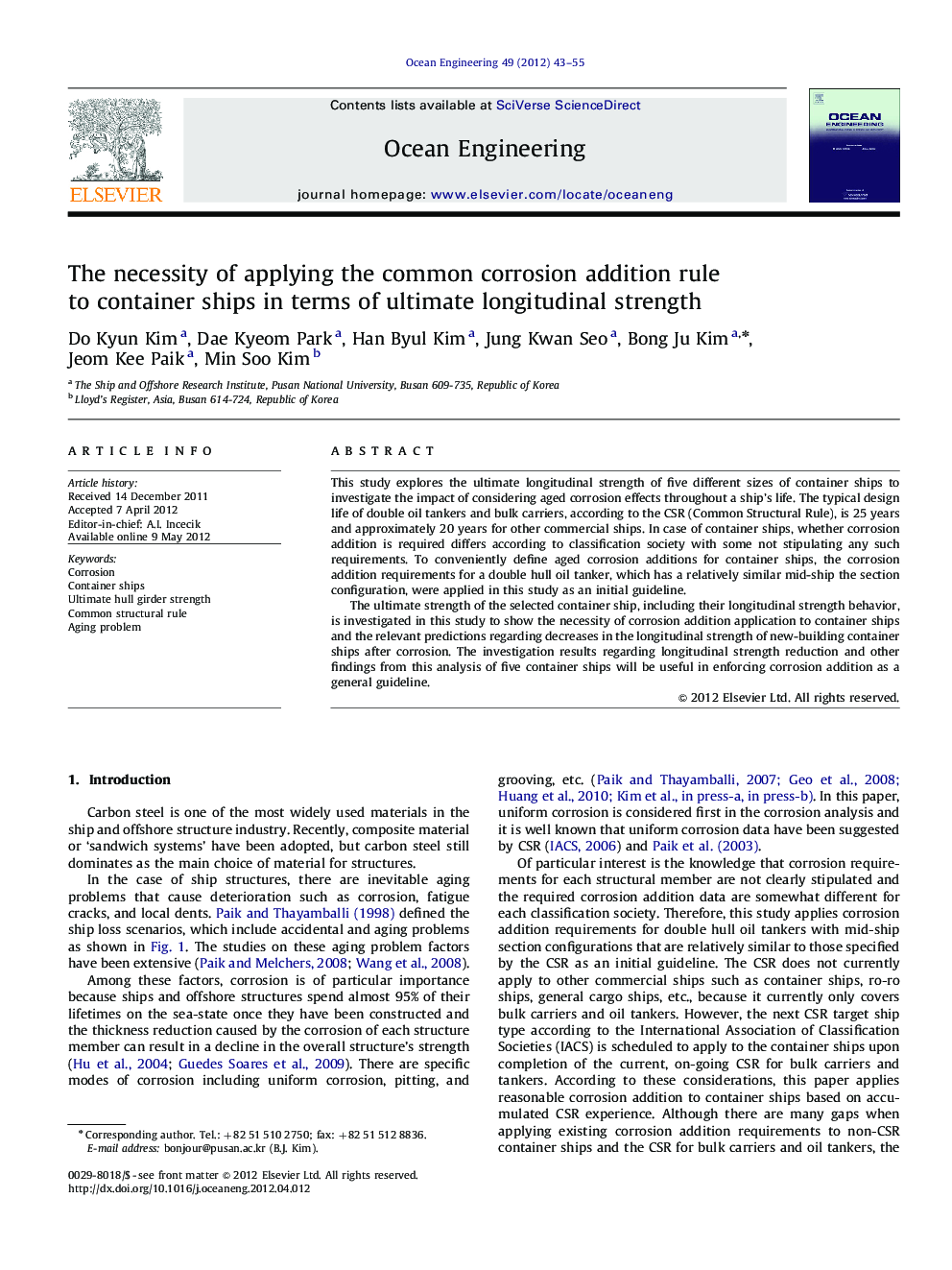| Article ID | Journal | Published Year | Pages | File Type |
|---|---|---|---|---|
| 1726238 | Ocean Engineering | 2012 | 13 Pages |
This study explores the ultimate longitudinal strength of five different sizes of container ships to investigate the impact of considering aged corrosion effects throughout a ship's life. The typical design life of double oil tankers and bulk carriers, according to the CSR (Common Structural Rule), is 25 years and approximately 20 years for other commercial ships. In case of container ships, whether corrosion addition is required differs according to classification society with some not stipulating any such requirements. To conveniently define aged corrosion additions for container ships, the corrosion addition requirements for a double hull oil tanker, which has a relatively similar mid-ship the section configuration, were applied in this study as an initial guideline.The ultimate strength of the selected container ship, including their longitudinal strength behavior, is investigated in this study to show the necessity of corrosion addition application to container ships and the relevant predictions regarding decreases in the longitudinal strength of new-building container ships after corrosion. The investigation results regarding longitudinal strength reduction and other findings from this analysis of five container ships will be useful in enforcing corrosion addition as a general guideline.
► Container ships do not have any common corrosion addition rule. ► Hogging condition caused 19–28% drop of longitudinal strength in net scantlings. ► Sagging condition caused 12–23% drop of longitudinal strength in net scantlings. ► Trend line relating to corrosion effect of ship is formulized in terms of ship size. ► Ship's size and corrosion effect are in relationship of inverse proportion.
